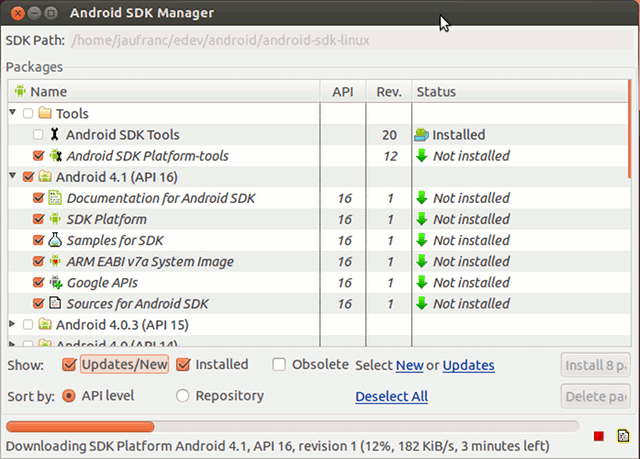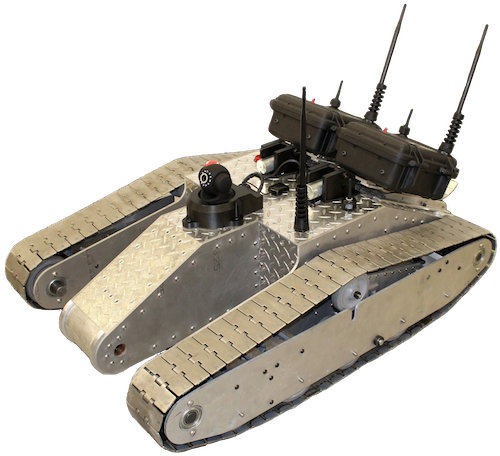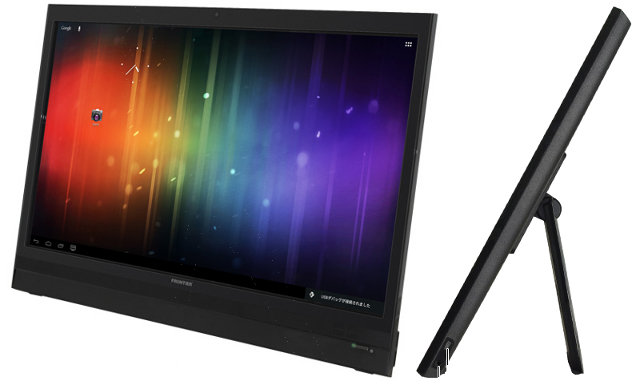ELLCC is a project aiming at creating a multi-target cross compilation environment for embedded systems. which makes use of Clang and the LLVM compiler infrastructure. QEMU is used for cross-platform testing. The project goals are to implement the following key features: A functional C/C++ compiler based on Clang (ecc) Multi-target support: ARM, i386, Microblaze, Mips, Nios2, PowerPC, PowerPC64, Sparc and X86_64 Multi-OS support: Linux, Standalone, … A complete test environment that allows automatic unit and integration testing of the run-time environment and complete executables. Support of a wide variety of target processors from armv4 to armv7, several mips cores, i386, and more. The project is still being developed, and ELLCC is in a pre-release state. ELLCC is composed of the following components: ecc – The ELLCC C/C++ compiler, a single executable with gcc compatible options. binutils – The GNU binutils package. libecc – The C standard library based on the musl standard […]
ST-Ericsson To Launch 2.3 GHz NovaThor L8580 Dual Core Cortex A9 Processor
ST Ericsson is working on a new application processor manufactured with 28 nm FD-SOI technology by ST Microelectronics. The new processor NovaThor L8580 features 2 Cortex A9 core that can be clocked at 2.3 GHz and is aimed at smartphones and tablets. The company also improved power efficiency, as L8580 consumes 35% less energy than L8540 (28 nm) when clocked at 1.85 GHz (maximum frequency for L8540). If you need even lower power consumption, L8580 can be clocked at 1.0 GHz with an input voltage of 0.6 V, whereas current competitors’ processors require at least 0.9V to operate at 1GHz. ST-Ericsson estimates that Novathor L8580 will be able to offer an extra day battery life compared to L8540 on a typical smartphone, which correspond to about 4h and 2h30 extra for web browsing and HD video playback respectively. NovaThor L8580 SoC will embed a PowerVR SGX544 GPU clocked at 600 […]
XBMC for Android on Mele A1000 Media Player (Video)
Following this morning announcement, I’ve started to build XBMC for Android using the instructions on XBMC Android github repository, but it takes hours on my machine. In the meantime, I’ve found a prebuilt apk that I’ve tried on my Mele A1000 and shot a (super blurry) video. This is still a development version, so there are a lot of bugs, but it shows good progress. The user interface renders at 28 fps and it’s very smooth, although CPU usage is about 65%. The remote control can work properly, but XBMC does not respond to mouse clicks and keyboard input. It can find UPNP servers (Windows) and locate your file. SMB client crashes XBMC on my system I’ve tried Big Buck Bunny 480p, 720p and 1080p, and none of the sample can play smoothly, so NEON software decoding does not appear to be fast enough to play videos smoothly. The APK […]
Installing Android SDK on Ubuntu 12.04
The official instructions to install Android SDK do not appear to be really up-to-date for Ubuntu 12.04, so I’ll post how I’ve installed the Android SDK and Eclipse on Ubuntu 12.04. First download and decompress Android SDK for Linux:
|
1 2 |
wget http://dl.google.com/android/android-sdk_r20-linux.tgz tar xzvf android-sdk_r20-linux.tgz |
on 64-bit Ubuntu:
|
1 |
apt-get install ia32-libs |
Sun Java is not part of Ubuntu packages anymore, so you’ll need to use openjdk instead
|
1 |
apt-get install openjdk-6-jdk |
Now install the SDK
|
1 2 |
cd android-sdk-linux/tools ./android sdk |
Android SDK Manager should show up. Use the default recommended packages and platforms, as well as any extra packages you may need, and click on Install x packages, accept all licenses and after installation is complete, the Android SDK is installed. Eclipse IDE is optional, but it’s the most widely used IDE to develop Android apps. You can install Eclipse as follows:
|
1 |
sudo apt-get install eclipse-jdt |
Once both Android packages and platforms, and eclipse are installed, start eclipse:
|
1 |
eclipse |
Then in the top menu, click on Help->Install […]
WiFi Tank Based on EEE PC, Arduino, Ubuntu and Node.js
Eight computer and electrical engineers built a WiFi Tank (Node.js robot) as part of a senior design project at Northeastern University, in Boston, Massachusetts. The robot brain is an EEE PC running Ubuntu, together with an Arduino board and is programmed using node.js. Each tank is equipped with a camera and 2 customized Wi-Fi repeaters (which it can drop it extend range), and it’s targeted at military operations or disaster-affected areas where network infrastructure is not available. Here are the key characteristics of this robot Robot controlled over WiFi 102 cm long, 71 cm wide, 41 cm tall, about 68 kg. Custom-built (except for treads) out of aluminum Range: 1 km with one on-board router and two droppable long-range repeater modules Running time: ~12 hours On-board webcam with microphone, night vision, pan and tilt On-board GPS for location tracking Custom-made remote user interface, works on any device with a web […]
XBMC Media Center Coming to Android
I’ve received a mysterious picture this morning without further details… After a little Google search, it appears XBMC has announced their progress on XBMC for Android. There was already XBMC remote and thin client available on Google Play, but the latest announcement is the real deal, and XBMC can be launched on you Android based devices be it a set-top box, a tablet, a phone, or whatever… It will be the same user experience as on the desktop Have a look at a short (and blurry) teaser video showing XBMC running in Android. “Big Buck Bunny” video is to media player what Angry Birds is to tablet, it has to be shown during demos… XBMC developers explain that most devices only support software decode of audio and video for now, but expect on OpenMAX based player to eventually be available. The main development platform was a Pivos XIOS DS set-top-box […]
ACE CoSy Compiler Framework Outperforms LLVM by up to 25% for ARM9 processors
ACE (Associated Compiler Experts) announced that their 2012 CoSy compiler development system delivers better performance than the latest LLVM 3.0 compiler on ARM9 processors. Using an ARM9 processor as reference, CoSy compiler framework (2012) shows more than 15% performance improvement using Livermore benchmark loops and 25% in MiBench against LLVM 3.0. The CoSy compiler framework is also more than 7% ahead of LLVM on the EEMBC CoreMark benchmark. The company explains this feat by the use of “CoSy’s unique flexible phase ordering of cutting-edge code optimizations and the addition of new CoSy features” such as compile-time code generator feedback injected into optimization algorithms in order to augment realistic and accurate decision making in architecture-independent optimizations. ACE did not publish the benchmark results publicly, and I could not find any reference to “cosy” or “ace” in EEMBC Coremark database, so I could not check those results myself. CoSy Compiler Framework is […]
Frontier FT103 21.5″ Android SmartDisplay
Frontier, a Japanese company, launched a 21.5″ Smartdisplay running Android 4.0 powered by Texas Instruments OMAP4428 application processor with 1 GB RAM and 8 GB Flash. Here are the specifications of this giant Android tablet: Processor – Texas Instruments OMAP 4428 dual core Cortex A9 @ 1 GHz System memory – 1 GB Storage – 8 GB Flash + SD card slot (Up to 32 GB) Display – 21.5″ TFT LCD touch panel (maximum resolution: 1920 x 1080) USB – microUSB (stereo mini jack) USB2.0 + 2x USB 2.0 Host ports. Audio I/O – Built-in Microphone, built-in stereo speakers (1W + 1W) and headphone jack. Connectivity 10/100 MBit Ethernet Wifi 802.11 b/g/n Bluetooth ® Ver.2.1 + EDR Camera – 1.2 MP Webcam Power Supply – AC adapter (19V, 2.1A) Dimensions – 512.8 x 353 x 24.8 mm Weight – 5.0 kg The company does not expect you to carry this […]










